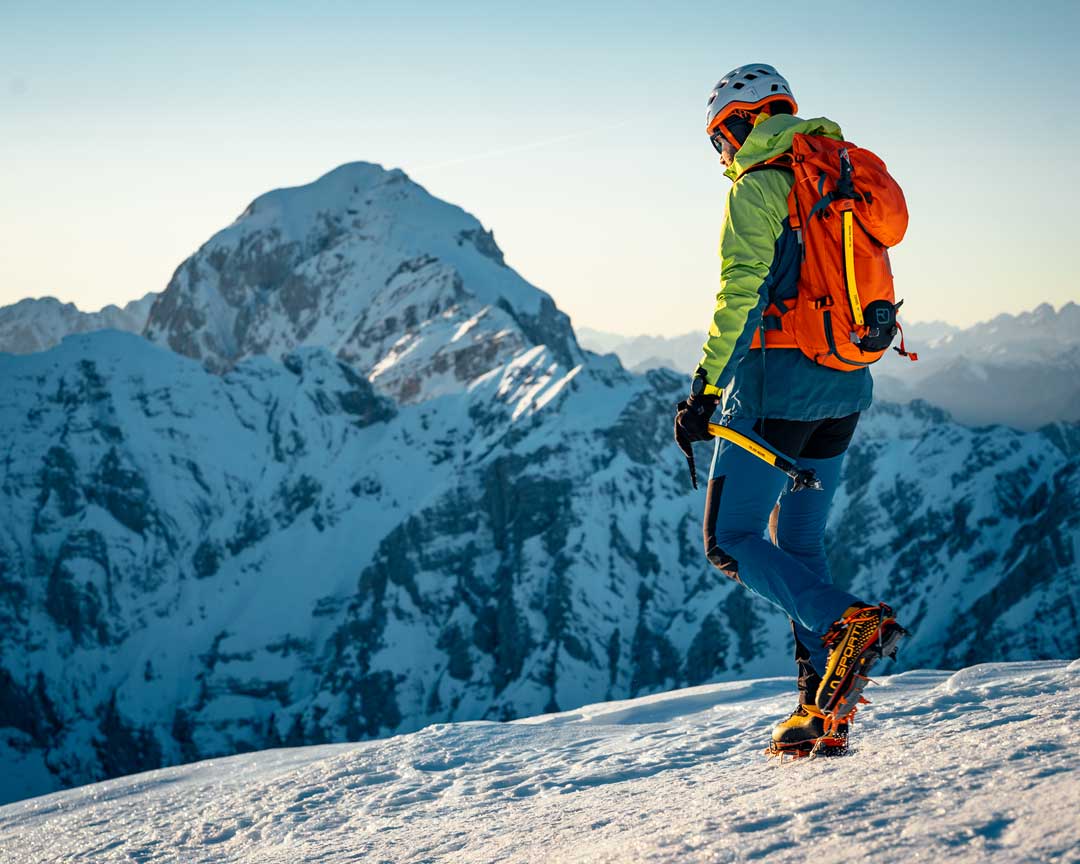There’s a long tradition of ice climbing in Europe – far more than so ice climbing in the UK. With much more consistent conditions and higher, colder landscapes there is more than enough to keep ice climbers busy all winter. While it’s not exactly a mainstream sport, but ice climbing does have a European Cup and an international governing body based in Switzerland. Plus, Europeans can arguably claim to have invented the sport of ice climbing in the first place – the first recorded ice climbing competition was in Courmayeur, Italy way back in 1912.
Now, a few words of warning before we get our ice tools stuck in. Obviously, ice climbing isn’t one of those things you read a few sentences about online and then have a crack at yourself. Not unless you’re ice climbing with two Lego men at the back of your freezer. We’ve got a primer that covers the basics, a beginner’s guide to ice climbing, but you’ll need to know your way around ropes and crampons before you even think about starting. It helps to be pretty comfortable with rock climbing first, before progressing onto things like learning winter weather conditions, how to place ice screws and all that fun stuff. Basically, what we’re saying is that – as awesome as it is to develop these skills for yourself from the ground up – you’ll be way better off going with a guide. All good? Now let’s grab those ice axes and see where the finest frozen waterfalls on the continent can be found.
Slovenia Ice Climbing

Ah Slovenia. It’s almost unfair the amount of adventure options packed into so small a space. And winter, here, is no exception. Assuming you want a break from ski touring, snow shoeing, and horse riding there’s plenty of ice to go climbing on. Fancy winter mountaineering to high peaks? Slovenia’s got you covered. The highest mountain, Triglav, is 2864m above sea level. The real ice climbing gems of Slovenia though have to be its waterfalls. There’s nothing quite as impressive as climbing up a frozen snapshot, with their tumbling pillars of ice.
In the Julian Alps, the town of Kranjska Gora is a good starting point to base yourself from. For newbies, Mlačca gorge in Mojstrana has good options. But you do have to pay a small fee to get in. Or choose your favourite waterfall in Prednja glava, at Prisank mountain. Tamar valley, is a well-known alpine destination too. And unlike Oscar Wilde, we believe popular is quite often right. It’s an oldie but a goodie
Don’t forget that it’s not just the Julian Alps for ice climbing in Slovenia either. The Kamnik-Savinja Alps are often forgotten, small compared to their Julian cousins they still have plenty of frozen waterfalls to enjoy over winter.







